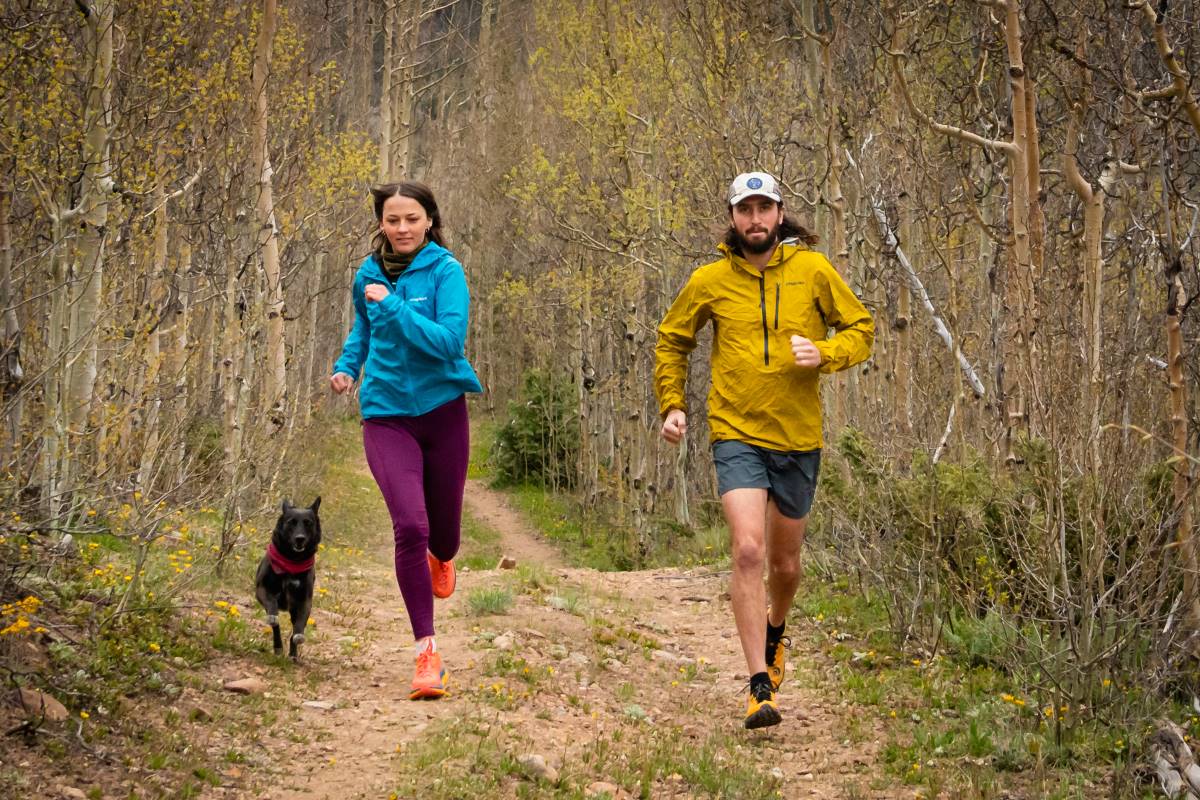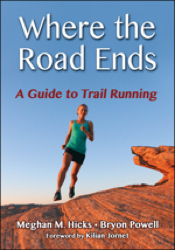
If you enjoy this article, then get your own copy of the book “Where the Road Ends!”
Welcome to this month’s edition of “Where the Road Ends: A Guide to Trail Running,” where we help you plan for your first trail race!
“Where the Road Ends” is the name of both this column and the book Meghan Hicks and Bryon Powell of iRunFar published in 2016. The book Where the Road Ends: A Guide to Trail Running is a how-to guide for trail running. We worked with publisher Human Kinetics to develop a book so anyone can get started, stay safe, and feel inspired on the trail.
The book teaches you how to negotiate technical trails, read a map, build your own training plan, understand the basics of what to drink and eat when you run, and so much more. This column aims to do the same by publishing sections from the book, as well as encouraging conversation in the comments section of each article.
In this article, we bring you an excerpt from Chapter 12 about trail racing and how to prepare for it. Trail racing can be one of the most enjoyable expressions of our sport. Adequate preparation can seriously boost the fun factor, so use this article to get ready to race! In part 2, we’ve also shared some race-day tips to help you have your best day out.
Choosing a Race
Trail races come in many shapes and sizes. Races of any distance exist, from a few miles to 100 miles (160 kilometers) or more. Many trail events host races of several distances as well, such as a 5k (3.1 miles), half marathon, and marathon, all offered from the same starting line. You will also find that trail races take place on a variety of surfaces, from the grass of a local high-school cross-country course to up, down, and around some of the world’s most imposing mountains.
You’ll also have to choose the size of race you wish to participate in, from a small one with 40 or 60 participants to those with thousands of runners.
Because of other life commitments, some trail runners desire races that are close to home. Others like to use a trail race as a getaway or a reason to go on vacation. A trail race can make a lovely reason to explore new places both near and far.
Some communities frequently host trail races, as often as every weekend, whereas other areas with less-developed trail running communities might have trail races only a couple of times per year. If you live in a place that becomes snowbound in the winter, you will notice that the trail racing scene tapers off when the snow flies.
To find trail races, check out your local running store, ask other runners, search one of the many online trail race calendars, or search online for trail races in a particular geographic area.
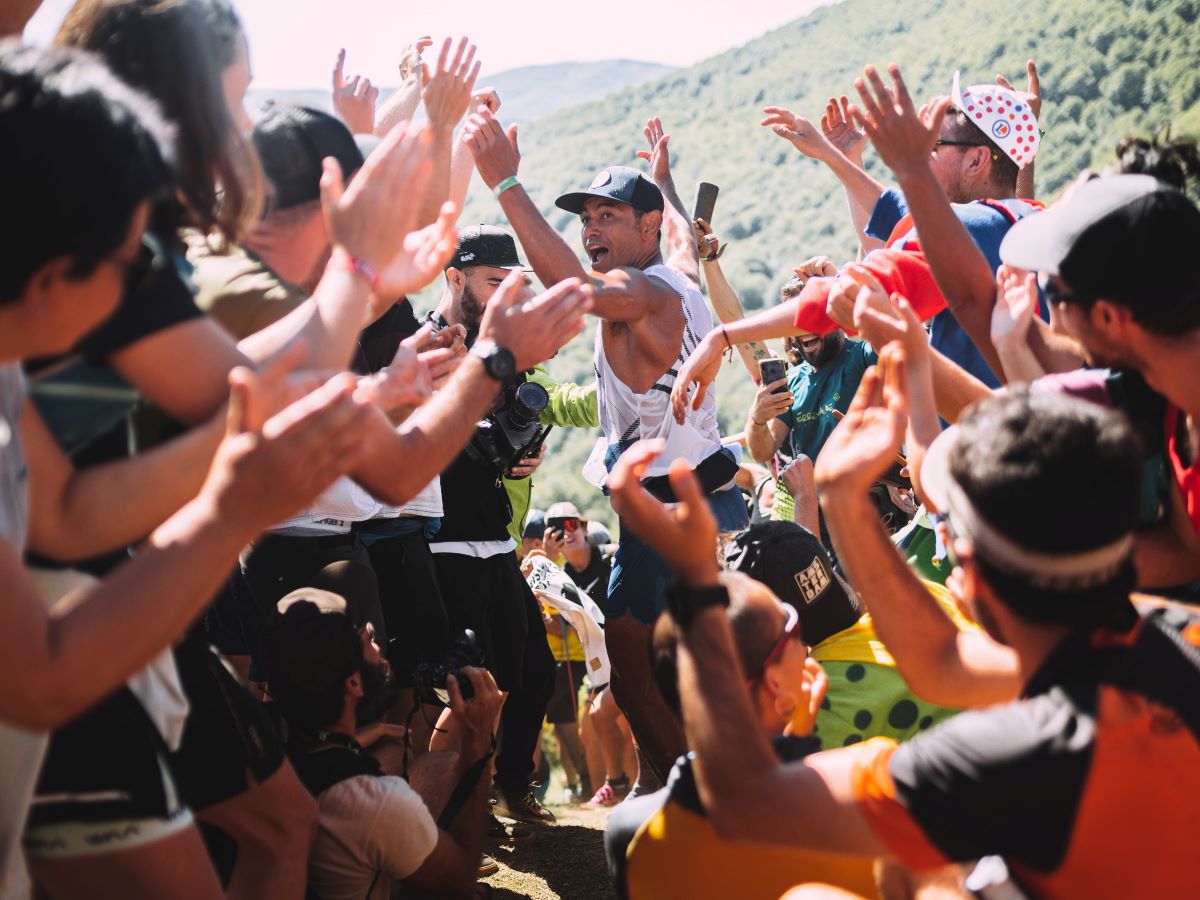
The 2022 Zegama Marathon, a race that is well known for its fantastic supporters. Photo: Toño Miranda
Course Familiarization
The course — the ups, downs, curves, climbs, rocks, and views — is perhaps the best part about a trail race. Knowledge is power in just about everything in life, and the same is true in trail racing. If you know what’s ahead on the course, you’re likely to find it a little easier to manage.
Almost all trail races have websites on which you can learn about the course, including the actual route, climbs and descents, aid stations (places where you can restock on water and food), as well as crucial intersections. For longer races with too much crucial information to remember, you can make a small cheat sheet to carry with you as a reference tool.
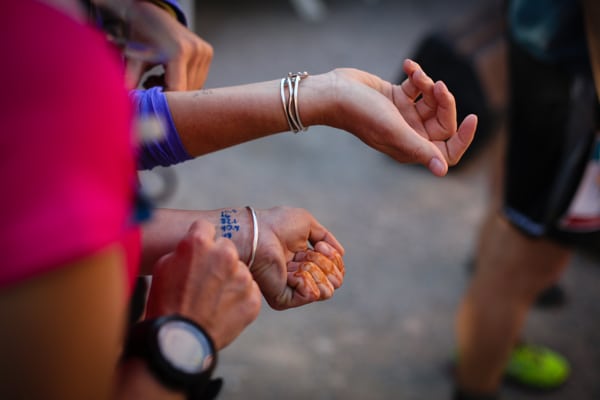
Competitors compare notes before the start of Stage 1 of the 2016 Trans Atlas Marathon. Photo: iRunFar/Kirsten Kortebein
Climate and Weather
Knowing the climate — the typical weather in terms of temperature, humidity, precipitation, cloudiness, visibility, and wind — for the region where you’re racing will help you plan all your needs such as water and fuel intake, gear, clothing choices, racing strategy, and more. For example, knowing when and how hot the weather will get on race day will inform when and how hard you decide to push during the race.
Fueling Plan
Whatever your racing goals, your water and nutrition intake is important.
The first thing you should do is decide how much water and fuel you will need for your trail race using the estimated time it will take you to complete the course, your effort level, and the likely weather. Some races are short enough that you won’t need water or fuel during the event, whereas races that last several hours require careful planning to ensure that you have the water and fuel you need. Apply the knowledge you’ve gained during training to develop your fuel plan.
A trail race longer than a couple of miles will generally have at least one aid station where you can get water, at a minimum. Some aid stations, especially those at longer races, offer additional drinks and food. Generally, aid stations are spaced 45 to 90 minutes apart.
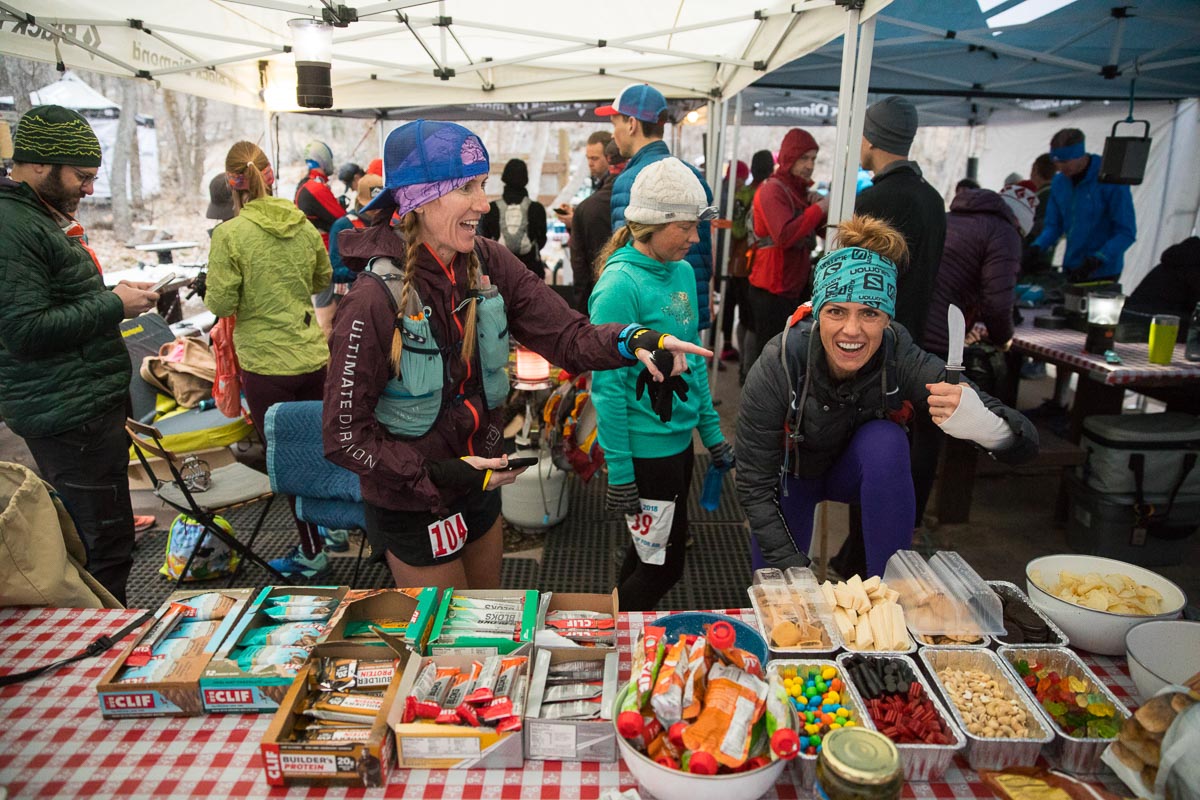
Runners and volunteers converge on the aid station at the 2018 Running Up for Air trail race at Grandeur Peak in Utah. Photo: Andrew Burr
For races in the 10k (6.2 miles) to half-marathon range, you might get your appropriate fuel and fluid intake by carrying one or two gels in a shorts pocket and drinking water or sports drink from the aid stations along the way. At longer races, if the weather or terrain is extreme or if the aid stations are far apart, you will need to carry and consume water and nutrition between aid stations. In this case, use your trail running gear to carry what you need — a handheld water bottle or a hydration pack.
To learn more, read our introduction to running hydration article as well as our introduction to running fueling article.
Shoe Choice
If you are the type of runner who has one pair of general-purpose trail running shoes that you wear in all conditions, you need not worry about race-day shoe choice. If you have multiple pairs of shoes, however, choose the one that best meets your personal needs and the trail conditions. Running your fastest might inform wearing your lightest pair of shoes.
Rocky terrain might mean that you need shoes with a good rock plate to protect the bottom of your feet. Mud or snow indicates wearing shoes with aggressive lugs for increased traction. This article discusses trail running shoes in detail, so make sure to look back as you decide what shoes to wear for your trail race.
Other Gear
For some races, you will have to carry additional gear such as a mandatory kit or extra clothing. Mandatory kits are a type of safety gear that a race requires you to carry in case an emergency occurs on the course. Examples of mandatory gear include a whistle, an emergency blanket, and a waterproof jacket.
The weather may necessitate that you carry extra layers of clothing to help you keep warm and dry, such as a wind jacket to guard against a breeze, a rain jacket to stay dry, or a hat and gloves for warmth. As you decide what gear you need for race day, be sure to check out this article for a full discussion of trail running gear.
Race Strategy
Even if you aren’t planning to race your hardest or even if your race plan is to have no plan, you can still benefit from at least briefly considering your race strategy. Race strategy is, very simply, a plan of how you would like your race to unfold from start to finish. Let’s call it an exercise in visualization and implementation.
If, for instance, you want no plan other than to adapt to whatever the event throws at you, spend a few minutes reminding yourself of your intent to run with flexibility and adaptability, and imagine what that will look like. If you would like a more developed race strategy, think it through ahead of your race, remind yourself of the particular skills you will need, and visualize yourself enacting that strategy. Among the many strategies for trail racing, here are a few to consider:
- Start slow, speed up midway, and push hard at the end of the race.
- Negatively split the race by running the second half faster than the first.
- Run and walk in alternating, even intervals, particularly on flatter courses.
- On hillier courses, run the flats and downhills and powerhike the uphills.
- Keep the pace conversational from start to finish.
- Run at a certain heart rate or effort level for the whole race.
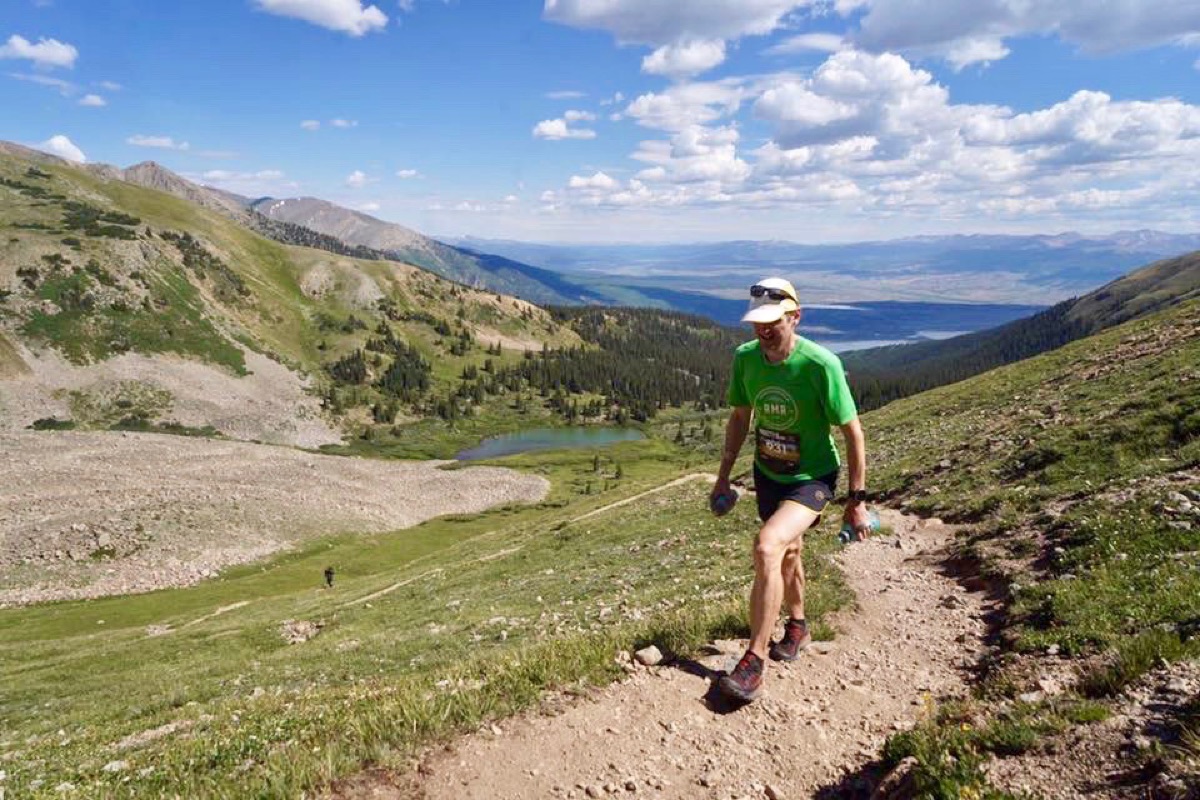
Ryan Smith climbing Hope Pass at the 2019 Leadville Trail 100 Mile. Hiking the climbs can be a smart strategy, particularly for longer trail races. Photo: Leadville Race Series
Crew Plan
Longer trail races, like a marathon or ultramarathon, may allow you to have a crew made up of family and friends who travel to designated aid stations to deliver you drink, food, and gear. If you’re running a race that allows a crew, make a plan for where and how you will use them, such as at which aid stations they’ll assist you and what materials they’ll provide you at each location. Make sure to give them directions to aid stations and a complete list of duties ahead of time. Planning your crew’s tasks will make their experience easier and more fun.
Excerpted from Where the Road Ends: A Guide to Trail Running, by Meghan Hicks and Bryon Powell. Human Kinetics © 2016.
Call for Comments
- What questions do you have about getting into trail racing that aren’t answered in this article?
- If you’ve participated in some trail races already, what do you know now that you wish you knew when you got into the sport?
- What other tips do you have on preparing for your first trail race?

